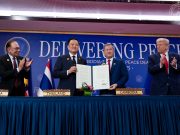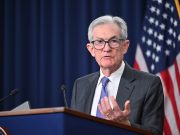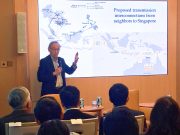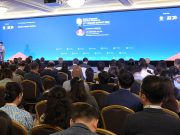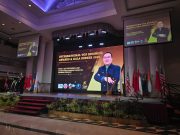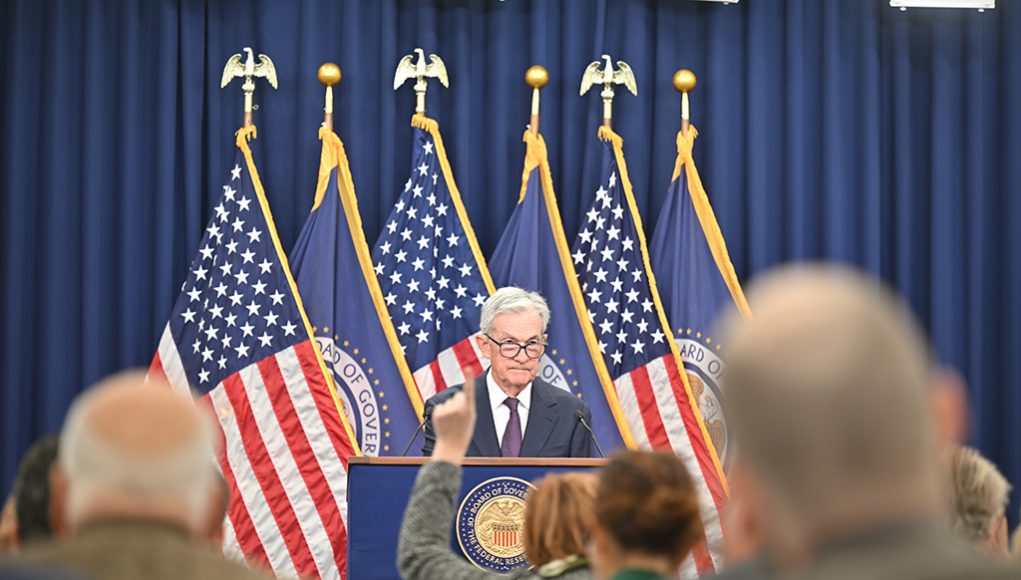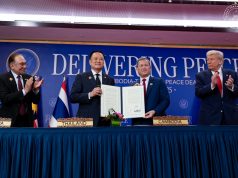
(Photo: FOMC)
(Singapore, 18.09.2025)The Federal Reserve, in a move that was as politically charged as it was widely anticipated, has cut its benchmark interest rate for the first time this year. This quarter-point reduction, which lowers the target range to 4%-4.25%, marks a clear shift in the central bank’s priorities. The Fed’s primary concern has moved from taming inflation to propping up a softening job market. The decision wasn’t unanimous, however, with internal dissent highlighting the intense political pressure the Fed is facing.
For months, the Fed had held rates steady, citing concerns about inflation, which has been accelerated by tariffs. However, recent economic data, particularly in the labor market, seems to have tipped the scales. Fed Chair Jerome Powell, in a post-meeting press conference, was starkly honest about the change in outlook. “I can no longer say” the labor market is “very solid,” he stated, a notable departure from his earlier, more optimistic tone.
Powell pointed to a slowing pace of job creation, which he said is now running “below the break-even rate needed to hold the unemployment rate constant.” This is a critical indicator that the job market is at a precarious point—any further slowdown in hiring or uptick in layoffs could lead to a rapid increase in unemployment.
The data supports this concern. A recent report showed that hiring continued to slow in August, with the unemployment rate rising to 4.3%—its highest level in nearly four years. This has been particularly felt by minority and younger workers, who are often the first to experience the negative effects of an economic downturn. Powell emphasized this point, noting that “minority unemployment is going up. You see younger people… more susceptible to economic cycles.” This increasing fragility has prompted the Fed to act with what it considers a “risk-management cut,” a preemptive strike to prevent the labor market from deteriorating further.
Political Winds and a Solo Dissenter
The Fed’s decision was made against a backdrop of intense political pressure from the White House. President Donald Trump has been a vocal critic of the central bank, demanding steep rate cuts to boost the economy. The political tension was palpable at the recent meeting. A newly-sworn-in Governor, Stephen Miran, who is on a temporary leave from his role as chair of the White House Council of Economic Advisers, cast the sole dissenting vote. Miran preferred a larger, half-point cut, a position that many analysts believe aligns with the president’s demands.
Miran’s dissent was a stark contrast to the rest of the committee, which voted 11-1 in favor of the smaller cut. This included two other Trump appointees, Christopher Waller and Michelle Bowman, who had previously dissented in favor of a rate cut but chose to side with the majority this time. Their support for the more modest cut was a notable victory for Powell and a sign that the committee, despite political pressure, is attempting to maintain a unified front. David Bianco, a chief investment officer at DWS Group, observed that the committee was “showing solidarity in making a tough decision together,” even with an “antagonist in the room.”
The political drama extended beyond the meeting room itself. Trump’s ongoing legal battle to fire Fed Governor Lisa Cook also hovered over the proceedings. Cook, who attended the meeting, has been a target of the administration, but so far, her position has been upheld in court. Her presence at the meeting, and her vote in favor of the rate cut, underscored the central bank’s commitment to its independence. Powell, in a pointed response to questions about the Fed’s political independence, said, “It’s deeply in our culture to do our work based on the incoming data and never consider anything else.”
Cautious Easing Ahead
While the rate cut was widely expected, the path forward is less clear. The Fed’s updated economic projections now foresee two additional quarter-point cuts this year, one more than they had projected in June. They also anticipate one more cut in 2026 and another in 2027. However, Powell was careful to manage expectations, describing the central bank as being in a “meeting-by-meeting situation.” He emphasized that the Fed is not at the beginning of an “aggressive easing campaign” that would signal a looming recession. The future trajectory of rates, he said, will be “very much dependent on how the economy plays out from here.”
This cautious approach is a reflection of the conflicting economic signals the Fed is grappling with. While the labor market is weakening, inflation remains “somewhat elevated,” according to the Fed’s own statement. Tariffs on imports have caused prices to rise, and some officials are concerned that this could lead to persistent inflation rather than a one-time blip. The Fed’s preferred gauge of prices rose 2.6% in the year through July, well above its 2% target.
The Fed’s actions have had a mixed impact on financial markets. U.S. stock futures advanced slightly, but global markets have been “choppy” as investors assess the Fed’s outlook. The U.S. dollar, which initially dropped after the rate cut announcement, has since rebounded.
Bond yields have been volatile, and commodity prices, including oil, have fallen. The uncertainty reflects the delicate balance the Fed is trying to strike: easing monetary policy to support the job market without reigniting inflationary pressures.
The cut, though modest, marks a significant turning point for the Federal Reserve. After a long period of holding steady, the central bank has now signaled its willingness to act to protect the job market. But with political pressure, conflicting economic data, and the risk of a recession on the horizon, the path forward remains anything but certain.




